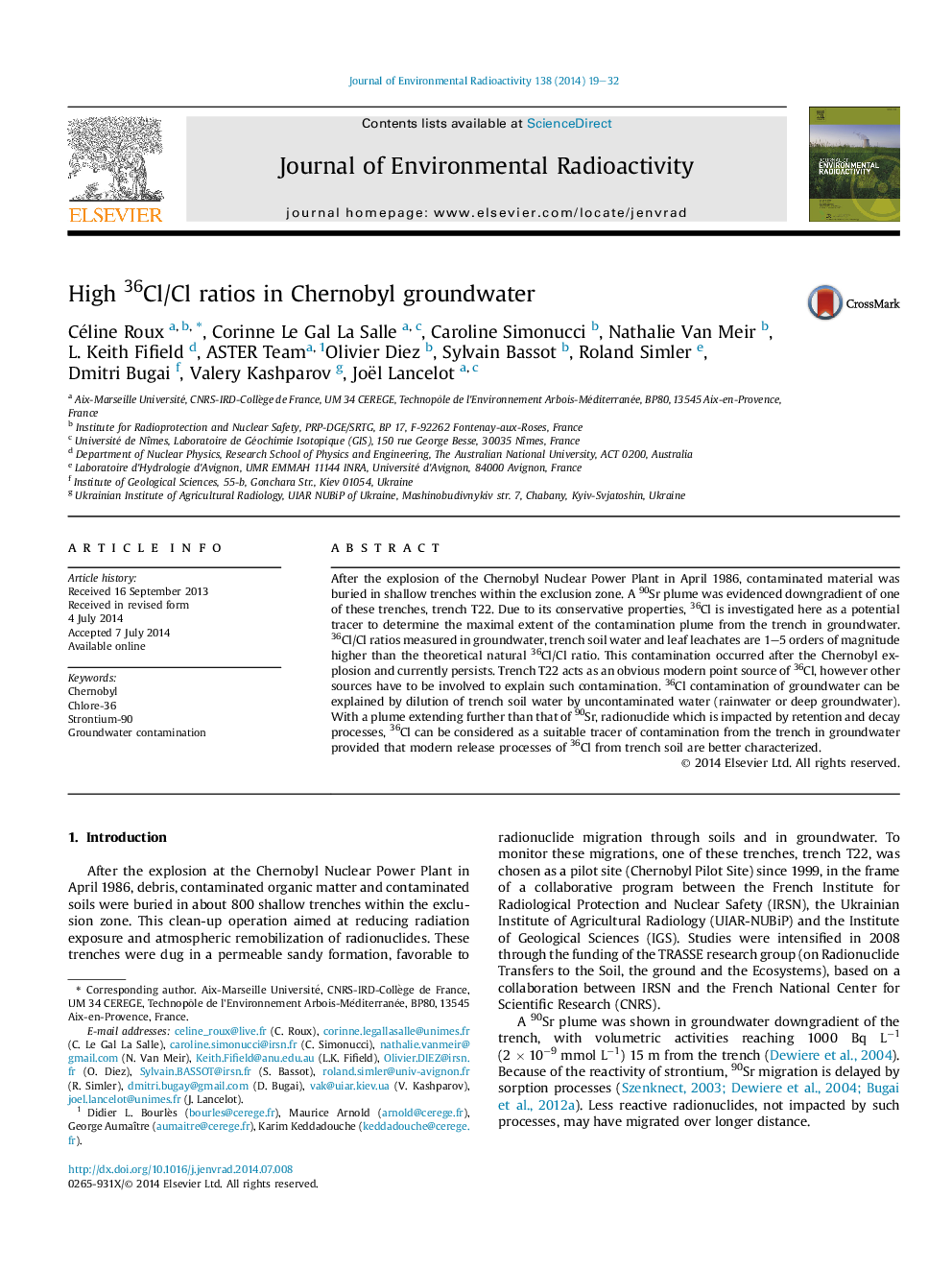| Article ID | Journal | Published Year | Pages | File Type |
|---|---|---|---|---|
| 8082695 | Journal of Environmental Radioactivity | 2014 | 14 Pages |
Abstract
After the explosion of the Chernobyl Nuclear Power Plant in April 1986, contaminated material was buried in shallow trenches within the exclusion zone. A 90Sr plume was evidenced downgradient of one of these trenches, trench T22. Due to its conservative properties, 36Cl is investigated here as a potential tracer to determine the maximal extent of the contamination plume from the trench in groundwater. 36Cl/Cl ratios measured in groundwater, trench soil water and leaf leachates are 1-5 orders of magnitude higher than the theoretical natural 36Cl/Cl ratio. This contamination occurred after the Chernobyl explosion and currently persists. Trench T22 acts as an obvious modern point source of 36Cl, however other sources have to be involved to explain such contamination. 36Cl contamination of groundwater can be explained by dilution of trench soil water by uncontaminated water (rainwater or deep groundwater). With a plume extending further than that of 90Sr, radionuclide which is impacted by retention and decay processes, 36Cl can be considered as a suitable tracer of contamination from the trench in groundwater provided that modern release processes of 36Cl from trench soil are better characterized.
Related Topics
Physical Sciences and Engineering
Energy
Nuclear Energy and Engineering
Authors
Céline Roux, Corinne Le Gal La Salle, Caroline Simonucci, Nathalie Van Meir, L. Keith Fifield, ASTER Team ASTER Team, Olivier Diez, Sylvain Bassot, Roland Simler, Dmitri Bugai, Valery Kashparov, Joël Lancelot,
